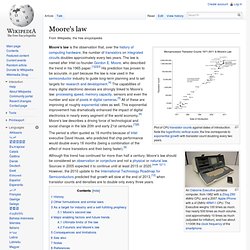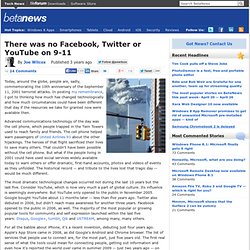

Moore's law. Moore's law is the observation that, over the history of computing hardware, the number of transistors on integrated circuits doubles approximately every two years.

The law is named after Intel co-founder Gordon E. Moore, who described the trend in his 1965 paper.[1][2][3] His prediction has proven to be accurate, in part because the law is now used in the semiconductor industry to guide long-term planning and to set targets for research and development.[4] The capabilities of many digital electronic devices are strongly linked to Moore's law: processing speed, memory capacity, sensors and even the number and size of pixels in digital cameras.[5] All of these are improving at roughly exponential rates as well. This exponential improvement has dramatically enhanced the impact of digital electronics in nearly every segment of the world economy.[6] Moore's law describes a driving force of technological and social change in the late 20th and early 21st centuries.[7][8] History[edit]
There was no Facebook, Twitter or YouTube on 9-11. Today, around the globe, people are, sadly, commemorating the 10th anniversary of the September 11, 2001 terrorist attacks.

In posting my remembrance, I got to thinking how much has changed technologically and how much circumstances could have been different that day if the resources we take for granted now were available then. Advanced communications technology of the day was the cell phone, which people trapped in the Twin Towers used to reach family and friends. The cell phone helped warn passengers of United Airlines 93 about the other hijackings. The heroes of that flight sacrificed their lives to save many others. That couldn't have been possible without the cell phone.
Cybernetic Organism. Data Storage and Organization. Augmented Reality. Computer-Human Interface.